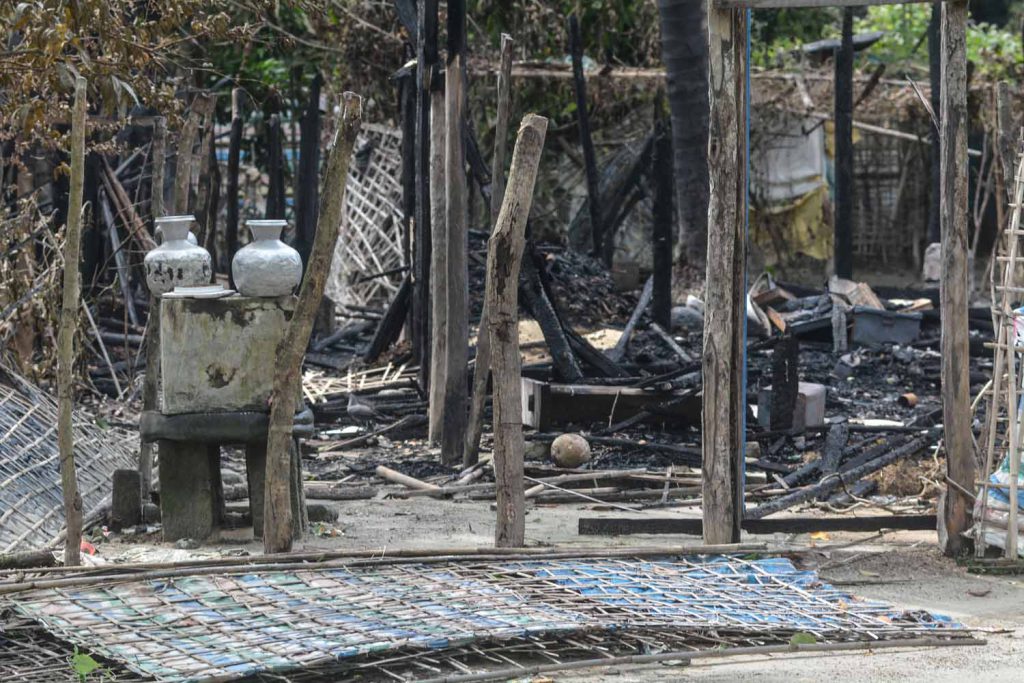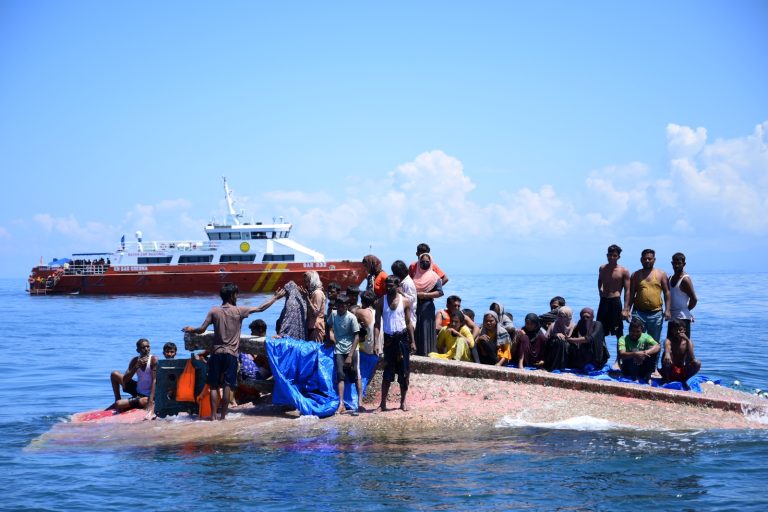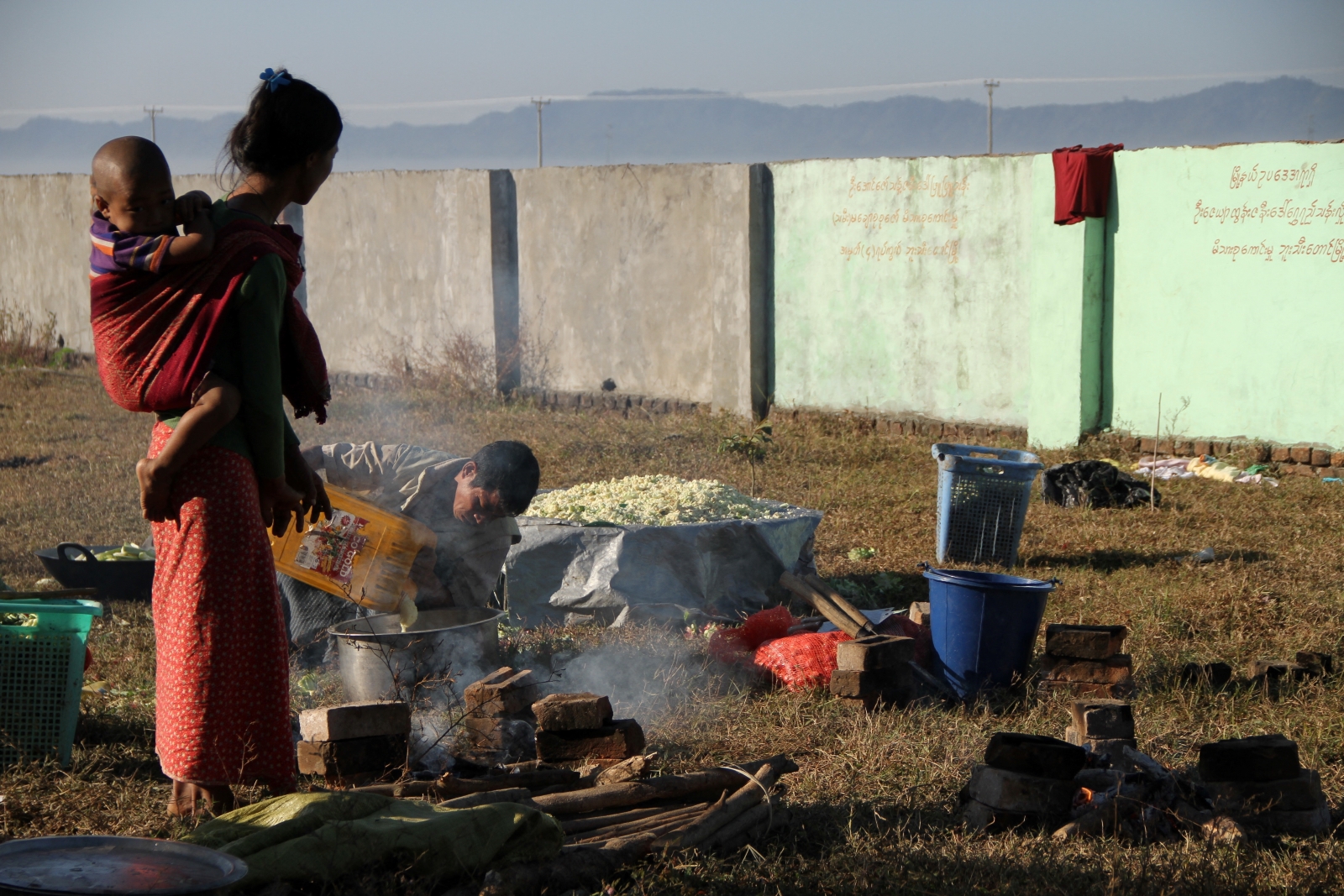YANGON — New satellite imagery suggests that the burning of villages in northern Rakhine State was conducted by members of security forces, not by villagers as the government has claimed, New York-based Human Rights Watch has said.
In a statement released on Tuesday, HRW said that at least 1,500 buildings have been destroyed in the area since security forces began conducting “clearance operations” in response to three attacks on police outposts on October 9 that saw nine security officers killed.
The government has said that close to 100 alleged attackers have been killed in the security operation. On December 10, state-run media reported that 575 suspected attackers have been detained so far, with 10 released, 470 still undergoing investigation and 88 sentenced.
The report, in The Global New Light of Myanmar, did not give any information about their trials or what sentences they had been handed.
The security response has led to accusations of disproportionate force against mostly Muslim villagers, including claims of extrajudicial killings, mass rape and the torching of houses. The military and the government have vigorously denied all charges made against it.
The United Nations Office for Humanitarian Affairs estimates that almost 30,000 villagers from northern Rakhine, mostly Muslims who self-identify as Rohingya, have fled to Bangladesh.
In response to the accusation of the burning of houses, the government has continually claimed that the attackers, or members of the Muslim population, have burned their own homes in order to elicit sympathy from the international community.
On November 13, HRW released satellite imagery showing “fire-related destruction” on 430 buildings in Muslim-majority villages in northern Rakhine State.
A statement released by the State Counsellor’s Office on November 17 said that the government “strongly refuted” the HRW report. It said that the government had sent teams to conduct investigations four villages on November 15, finding damage to 185 structure.
“The government photos show a much smaller area of burnt houses, while the Human Rights Watch photos show much greater devastation. The government contends that the burnt homes show in their photos were caused by attackers, not by the Tatmadaw,” the statement said.
On December 5, Commander-in-Chief Senior General Min Aung Hlaing posted on his Facebook page that “Myanmar security forces have never committed any human rights violations such as illegal killing, rape and arson attack.”
The latest satellite images released by HRW show that the number of destroyed buildings had increased to 1,500 as of November 23.
HRW claims that the patterns of the burnings suggest government responsibility in the destruction of the villages.
HRW said it had documented “systematic building destruction” in the villages on three occasions after security forces had reportedly come under attack in the area, “suggesting a reprisal element to the arson.”
HRW also said that fires in Wa Peik village, which was almost entirely burned down in three waves over a one-month period, had first started in the early afternoon of October 9.
HRW said it had identified the presence of a number of military transport vehicles and the landing of military helicopters at a base adjacent to Wa Peik while the village was burnt down, in stages, over successive weeks.
“It’s difficult to believe that militants burned down over 300 buildings in Wa Peik over a one-month period while Burmese security forces stood there and watched,” said Mr Brad Adams, Asia director at HRW.
“Burmese government officials have been caught out by this satellite imagery, and it’s time they recognise their continued denials lack credibility.”
Government spokesperson U Zaw Htay could not be reached for comment despite several attempts on Tuesday afternoon.
Rights groups have repeatedly urged the government to conduct a transparent investigation into the October 9 attacks and subsequent security operations.
On December 1, the government announced the formation of a 13-member commission to investigate the attacks and allegations of human rights abuses in the military crackdown.
However, activists have criticised the commission because it is headed by Vice President U Myint Swe, a hardline retired general, and has no Muslim members.







